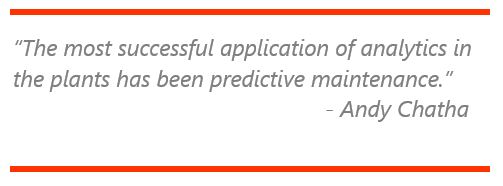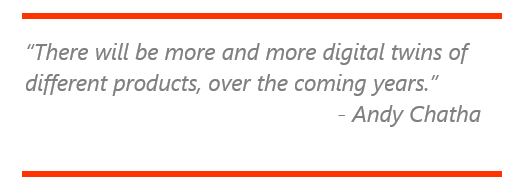

Digital transformation is defined, in simple terms, as the process of integrating digital technologies into business processes, culture, and customer experiences to meet the changing business and market requirements. A key facilitator of digital transformation in companies is the convergence of Operational Technology (OT) with Information Technology (IT) and Engineering Technology (ET).
Digital transformation was a key topic of discussion at the ARC Forum in Orlando, Florida, and contributing to this was an interview by Chris Cunnane with Andy Chatha, President of ARC Advisory Group. In this interview, Mr. Chatha talked about IT/OT/ET convergence; how manufacturing companies are dealing with it; and artificial intelligence, machine learning, and digital twins in manufacturing. This blog focuses on the highlights and key takeaways of the interview. The full interview can be viewed here and/or on YouTube.
For the past several years, there has been a lot of talk about how IT is increasingly coming into the plants. This is seen in the increasing use of analytics for maintenance operations, such as predictive maintenance, and moving data to the Cloud. It is all IT. As more IT is being used in plants, OT plant people have to make sure that it is safe and secure to use in the plants.
This trend has also been observed at the ARC Forum, where, increasingly, more IT companies are participating. In the past years, majority of the participants were OT companies, but this year the number of participating IT companies equaled them. And this year, the ARC Orlando Forum had a very unique keynote presentation from the Dow Company’s Peter Holicki, the Vice President of Manufacturing, and Melanie Kalmar, the CIO. They talked about the Digital Operations Center built by Dow, where new technologies are being tried to make sure that they are robust and secure before deploying them into plants.
Mr. Chatha talked about how IT continues to be implemented in manufacturing plants and OT converges with ET. This was supported by the fact that the ARC Forum 2020 saw engineering companies, like AVEVA, Bentley Systems, and Hexagon, participate. The IT/OT/ET convergence will benefit manufacturing plants, and they can leverage all these technologies to improve production and reduce costs.
Edge devices have become a buzzword. A lot of IT people are using edge devices, but in the plants, people have been using sensors and field devices for years. These edge devices are anything on-premise, such as control room equipment and the networks (routers and switches). And, companies have private data centers, which are used to bring in plant data, and on top of that is the Cloud, which is much more scalable.
According to Mr. Chatha, one of the biggest challenges facing companies right now is how to balance the data load. What should they really put in their control rooms or field devices, and what should they actually put into their data centers and the Cloud? For example, an MES solution – the more functions a company can move to the Cloud or to the data center, the more it can actually share them across multiple plants. But at the same time, the company has to consider the possibility of a break in the connection with the Cloud, in which case the company would need some of the functionality on-premise to run the plant. The key here is to strike a balance between keeping some of the functionality on-premise, in the plant, so that the plant can run smoothly, and moving some of the functionality to a higher level, the self-owned data center or the public cloud, to ensure this functionality can be shared across multiple plants.
When a company manages to strike the balance is when it starts getting benefits – starts running, benchmarks different plants, and learns from different plants. So, it is a challenge right now, and most application software companies are trying to work with their customers to decide what functions they should put on-premise, what they should move to the Cloud, and so on.
“Some companies have been using some of the artificial intelligence (AI) and machine learning (ML) algorithms for a long time,” Mr. Chatha said. A chemical company or an oil company has been using these and optimizing their operations for a long time. With advancements in technology, there are more powerful and easy-to-use analytics software products. The most successful application of analytics in the plants has 
More and more companies are now moving into the arena of machine learning where they can start learning the behavior of the machinery from the operations, going forward. For example, by taking a piece of machinery and actually analyzing it, a company can analyze its operational data over a period of time. This helps the company learn a lot and improve the performance of the machine. It is becoming so popular right now that analytics algorithms are being embedded pretty much into all kinds of machinery, from robots, to drones, to autonomous recalls.
There is so much information on the Internet these days – pictures, medical data, Tweets, and Facebook. All that personal data, collectively, could be a person’s digital twin on the Web. The same way some manufacturing companies have been using a lot of the process models and algorithms for a long time and actually benefiting from them.
“But the real difficulty is in developing digital twins of all the equipment in the plants,” Mr. Chatha explained. There are literally thousands of pieces of actual machinery and different kinds of equipment in the plants. 

